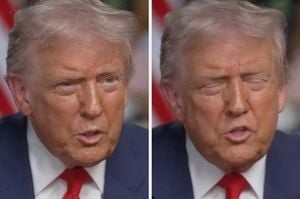Mexico’s financial sector has been rocked by the dramatic collapse of CIBanco, a development that has sent shockwaves through the banking industry and raised questions about the country’s capacity to combat money laundering and maintain investor confidence. The closure, driven by allegations of cartel-linked money laundering and international scrutiny, comes at a time when the Mexican government is touting record revenues and improvements in public safety, even as concerns about violence and economic stability persist.
On October 10, 2025, Mexico’s Bank Savings Protection Institution (IPAB) announced the revocation of CIBanco’s license and began the process of liquidating the institution, following sanctions imposed by the U.S. Department of the Treasury’s Financial Crimes Enforcement Network (FinCEN) in June. According to Mexico News Daily, the U.S. authorities accused CIBanco and two other Mexican banks of laundering millions of dollars for drug cartels, including the Beltran Leyva Cartel, the Gulf Cartel, and Cartel Jalisco New Generation. The most damning revelation was that in 2023, a Gulf Cartel member laundered $10 million through a CIBanco account, and the bank allegedly moved $2.1 million to China to pay for fentanyl precursors.
The fallout was immediate and severe. Thousands of customers found themselves scrambling to recover their funds as the bank’s assets were frozen and operations ground to a halt. IPAB announced that insured deposits would be paid out starting October 13, but customers without accounts at other Mexican banks were required to visit CIBanco branches or IPAB offices in person to submit a Payment Request. A July 2025 survey by Mexico News Daily found that 62% of CIBanco clients were already considering closing their accounts due to frozen transfers and restricted withdrawals. Many foreigners who relied on U.S. check deposits and international transfers to pay contractors and living expenses were especially hard hit, with one Mexican student abroad reporting an inability to access funds after Visa suspended international transactions.
The U.S. Treasury’s accusations set off a firestorm in Mexico. As Breitbart Texas reported, the Mexican Secretariat of Treasury and Public Credit quickly demanded proof of the allegations, insisting that their internal investigations had found only administrative faults and no evidence of criminal actions by the banks. President Claudia Sheinbaum herself publicly defended CIBanco, stating that U.S. authorities had not provided evidence to support the claims. Sheinbaum’s stance reflected the wider controversy, as several key political figures were reported to have ties to the financial institutions under scrutiny.
The closure of CIBanco is unprecedented in recent Mexican banking history. The regulatory crackdown extended to restrictions on other institutions, such as Vector and Intercam, signaling a new era of vigilance—or, depending on whom you ask, a period of heightened political tension between Mexico and the United States. According to Mexico News Daily, the CIBanco crisis exposed vulnerabilities in Mexico’s financial sector at a time when the government is eager to project institutional soundness, especially with pivotal United States-Mexico-Canada Agreement (USMCA) negotiations looming in 2026.
Despite the turbulence in the banking sector, the Sheinbaum administration celebrated several positive economic and security developments this week. Government revenue soared, increasing 9.1% annually in the first nine months of 2025 to reach 4.63 trillion pesos (about $251.7 billion). Finance Minister Édgar Amador Zamora credited roughly 200 billion pesos of this increase to improved foreign trade tax collection and anti-corruption efforts at border crossings. “Thanks to that … it has been possible to have very, very solid growth of public income, amid an economic context in which [GDP] growth has been a little more moderate,” Amador said, as cited by Mexico News Daily.
There were also notable advances in the technology and transport sectors. Salesforce, the cloud-based software giant, announced a five-year, $1 billion investment to expand operations in Mexico, including a new five-story headquarters in Mexico City and a commitment to train 100,000 Mexican students in artificial intelligence. Nuevo León, meanwhile, unveiled an electric cargo transport service using Windrose electric tractor-trailers to carry freight from Monterrey to Laredo, Texas, beginning in November, with plans to extend service to Dallas. These initiatives signal growing private sector confidence in Mexico’s ability to capitalize on nearshoring and global decarbonization trends.
State oil company Pemex also reported progress toward financial stability. Carlos Slim’s Grupo Carso signed a $1.991 billion contract to drill up to 32 wells in the Ixachi field in Veracruz, with payments contingent on well production. This public-private partnership exemplifies President Sheinbaum’s strategy of leveraging private investment to boost production while managing Pemex’s $98 billion debt burden. In a further sign of improvement, Fitch Ratings upgraded Pemex’s credit rating to BB+, just one notch below investment grade, after government capital injections exceeding $16 billion.
Yet, the positive headlines were tempered by persistent concerns over violence and public safety. Security data revealed that five popular tourist destinations—Tulum, Acapulco, Zihuatanejo, San Miguel de Allende, and Manzanillo—ranked among Mexico’s 50 most violent municipalities by per capita homicide rate between September 2024 and August 2025. For instance, Tulum recorded 83.9 homicides per 100,000 residents, while Manzanillo topped the list at 143.4 per 100,000. Despite these grim statistics, a Mexico News Daily survey found that most foreigners living in or visiting these cities maintained high perceptions of safety, as violent crime tends to be concentrated among certain groups and rarely affects tourists or expatriates directly.
Internationally, Mexico faced diplomatic challenges as six Mexican activists detained by Israeli forces during a flotilla to Gaza were repatriated. President Sheinbaum condemned the interception and reiterated Mexico’s support for Palestine, noting that the country had joined others in filing a complaint with the International Court of Justice in The Hague.
Looking ahead, the intersection of Mexico’s strengths and vulnerabilities will be tested during the upcoming USMCA review. U.S. Trade Representative Jamieson Greer recently accused Mexico of failing to honor USMCA commitments in sectors such as energy, telecommunications, and agriculture. Sheinbaum responded that Washington’s concerns stemmed largely from misunderstandings and expressed confidence that most issues had been resolved. Still, Greer’s blunt assessment that “it doesn’t make a lot of sense to talk about extending” the pact suggests that challenging negotiations are on the horizon.
Public sentiment remains uneasy, with 63.2% of Mexicans reporting feelings of insecurity—a three-year high—even as national homicide rates have dropped to their lowest level in nine years. At the U.S.-Mexico border, however, apprehensions have plummeted to a 55-year low, and the World Bank’s upgraded forecast of 0.5% economic growth suggests cautious optimism for stabilization.
As Mexico prepares for a critical year, the country’s ability to resolve contradictions—balancing compliance with sovereignty, and falling crime rates with rising public anxiety—will shape its future on the regional and global stage.




